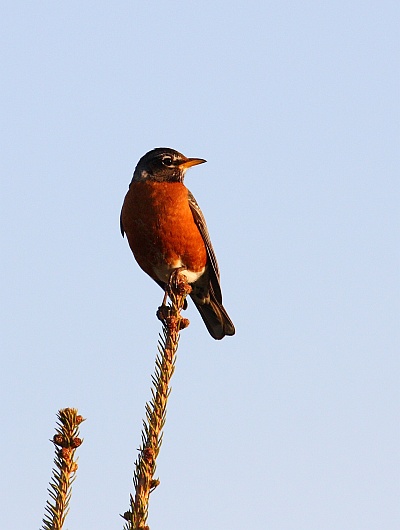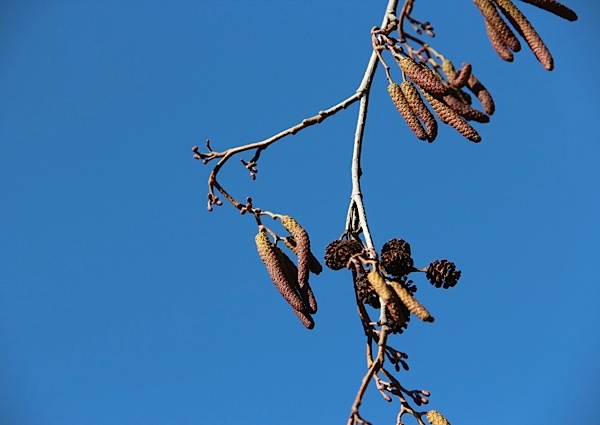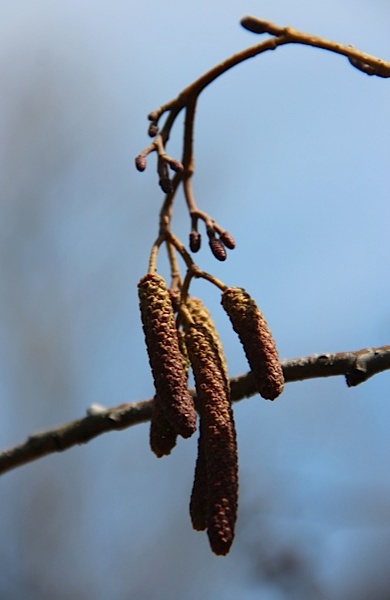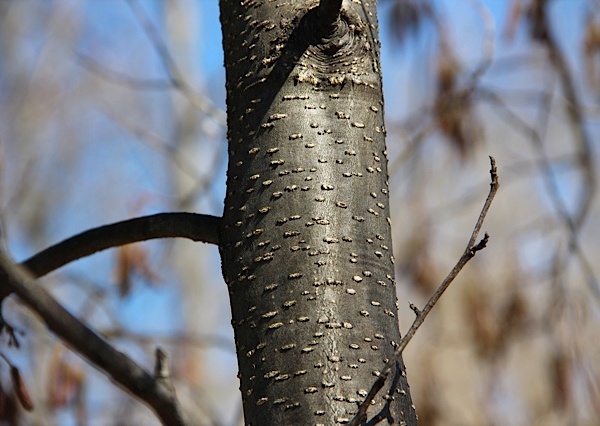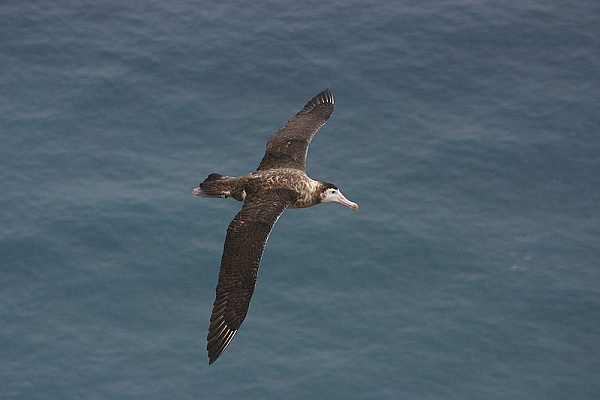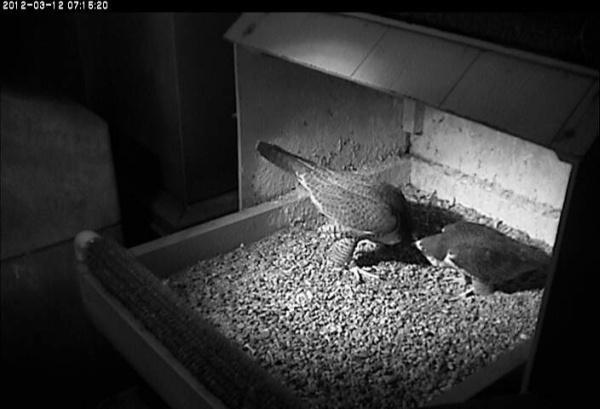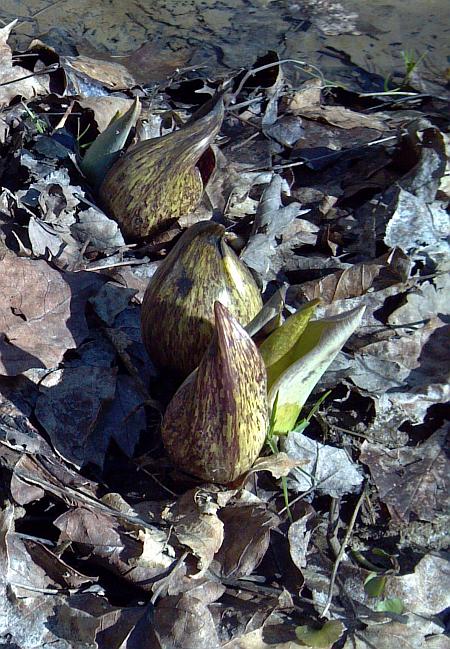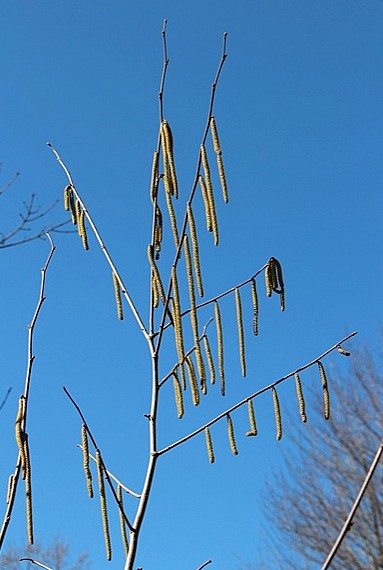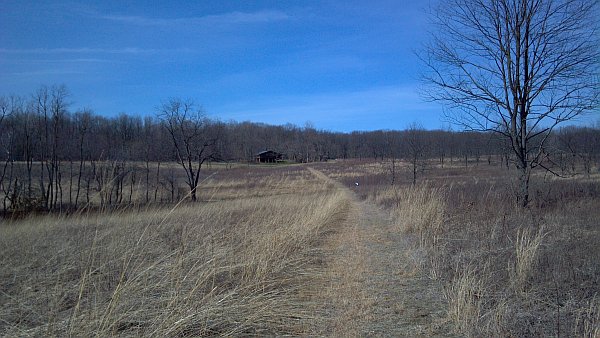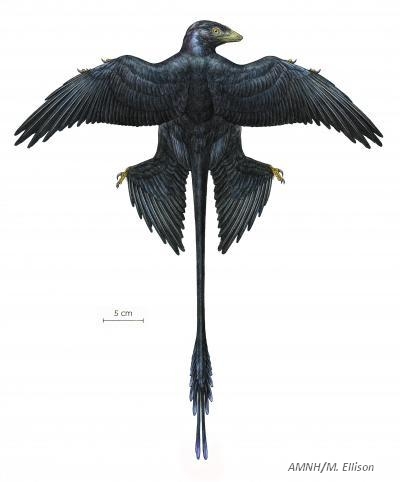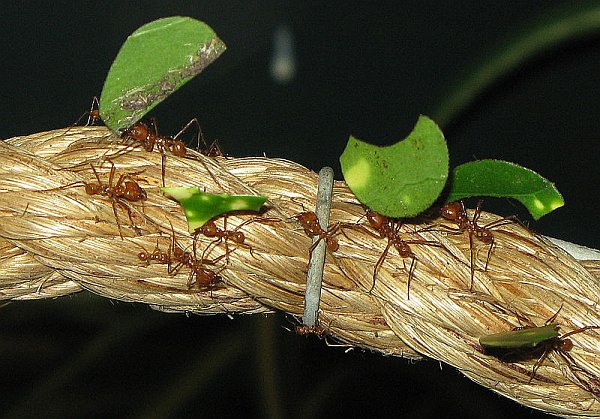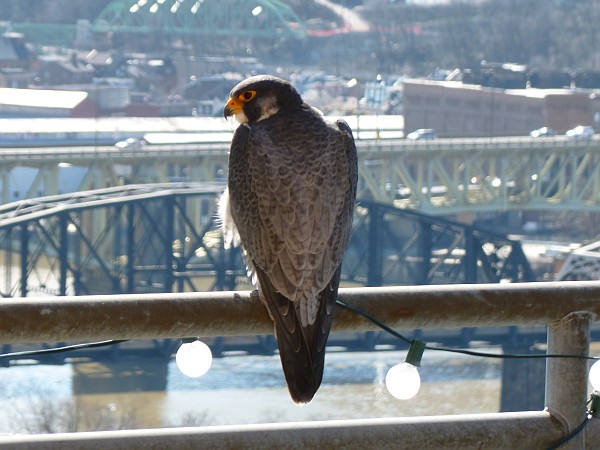
For more than a week Pittsburgh’s peregrine watchers have wondered why Louie and Dori aren’t visiting their nest at the Gulf Tower. Where are they?
Katie Munsch and Dan Costa found a clue. Yesterday morning they were startled to hear loud wailing coming from Katie’s 19th floor balcony at Point Park University in Downtown Pittsburgh. Since they couldn’t see the balcony from her window, they went outdoors to investigate and found this peregrine falcon!
Katie was worried about its behavior. The bird had been wailing, it attempted to spread its wings a couple of times but opened only one, and it allowed them to come quite close. Was it injured? She called the Pennsylvania Game Commission.
The Game Commission advised her to poke the falcon with a broom to determine whether or not it was injured. When Dan approached with a broom it flew away without effort. The bird was OK but Katie was puzzled so she posted a comment on my blog and sent me Dan’s pictures.
My first reaction was “Wow!”
Katie asked:
- Did I think this bird was male or female? — She looks female to me.
- What did the sound mean? — If the sound was a wail, then it was annoyed and telling a challenger (peregrine or hawk) to go away.
- Why did the bird let them come within 3-4 feet of it? –For this peregrine, Dan and Katie were not as big a threat as whatever it was looking or waiting for.
I had some questions, too.
- Did the peregrine have bands? –Dan and Katie couldn’t tell because the bird always faced away.
- Was the sound a wail like this? –Yes! Definitely the warning wail. This might be Dori, warning away an intruder, or it may be the intruder herself, warning away Dori. (I don’t know Dori’s face well enough to identify her by this photo.)
- Was the bird grooming? –Which would explain why it opened only one wing at a time.
By 4:00pm I was free to go investigate. On my way Downtown I stopped at Pitt and found Dorothy calmly perched on the Cathedral of Learning, facing the nest. Good!
Downtown, I drove with the window open to listen for wailing but heard none. I searched the Gulf Tower perches and surrounding buildings for peregrines. None.
Next stop, First Side. I walked around and scanned Lawrence Hall and the surrounding buildings for peregrines. None. I was beginning to think my search was hopeless when I heard a robin making alarm calls and saw him tilting his head toward the sky. I followed his gaze and found a peregrine perched 13 stories above us on a roof ornament of the West Penn Building.
When I stepped back for a better look the peregrine looked at me and flew away. It was not wailing but it was using the territorial flappy flight that signals, “This is mine!”
I can’t guess who this peregrine was, but now I know where the peregrines are focusing their attention: at First Side, less than half a mile from the nest.
Thanks to Katie and Dan we have a clue to the Gulf Tower mystery.
(photo by Dan Costa)
p.s. If you see any peregrines in Downtown Pittsburgh, please post a comment here! We want to know what’s going on.
